What you should cook over Christmas, according to chefs
If you long for the secret to the perfect crisp spud or need a break from turkey for the big feast, Lizzie Rivera compiles some bright ideas from foodies thinking outside the box

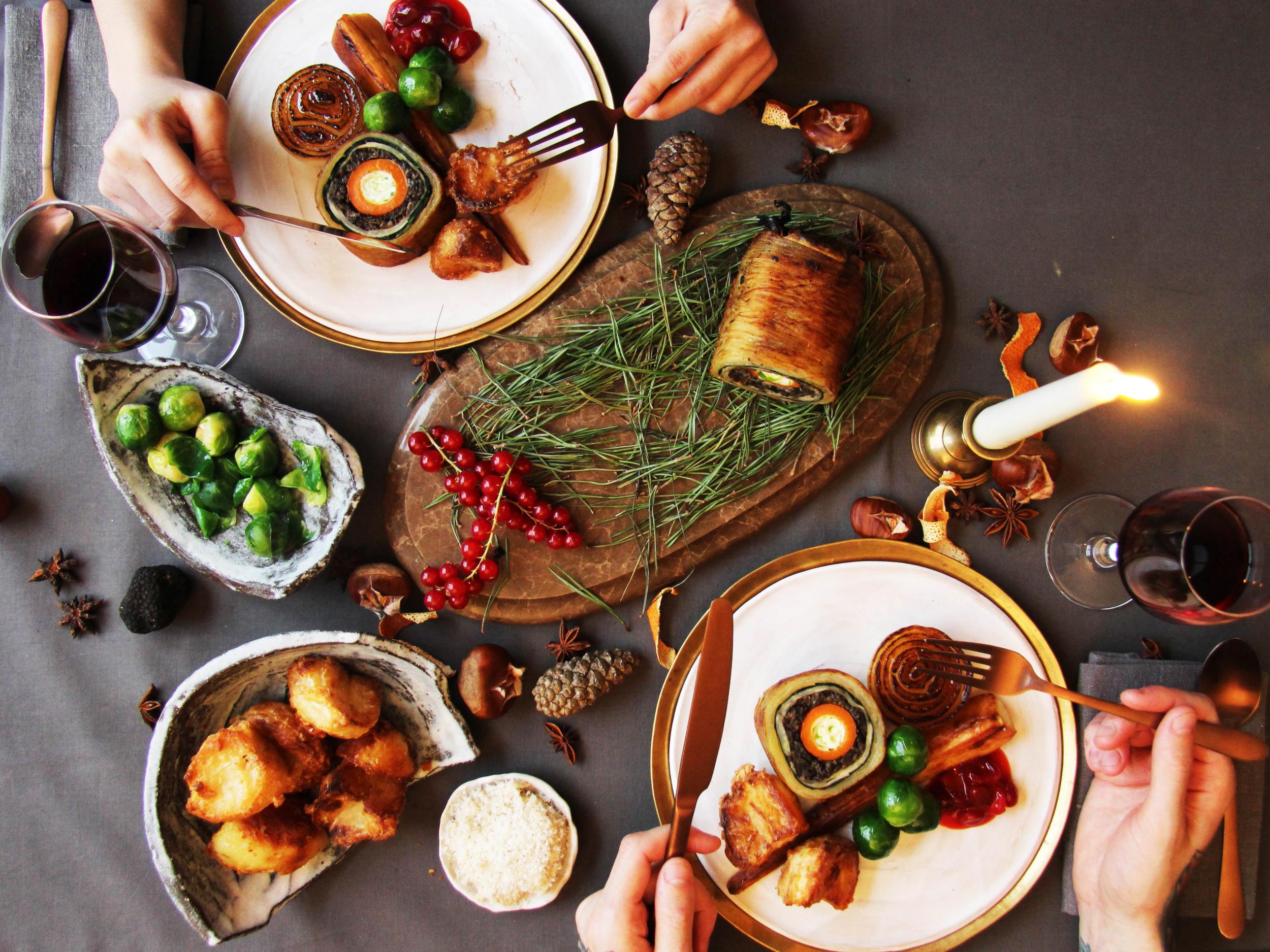
Most of us have our Christmas dinner methods sorted, but how do you get those roast potatoes crisp and fluffy if you’re catering for vegans and can’t use trusty old goose fat?
And what about those little touches that really elevate a dish, or the meals for the days that spread luxuriously and lazily ahead from Boxing Day to New Year?
In 2020, Christmas plans were largely cancelled across the UK due to lockdown restrictions. But with the big day set to go ahead this year (self-isolation pending), many people are looking for ways to make the holiday extra special.
We asked some of our favourite chefs, recipe creators and restaurateurs what they will be cooking at home over the festive season.

Getting into the Christmas Spirit with Mr Lyan’s legendary Galle house punch
Ryan Chetiyawardana, aka Mr Lyan, is an award-winning bartenders and founder of one of the World’s Best Bars, Lyaness, and sustainable cocktail restaurant, Cub.
“I love making punches over the Christmas period. Not only are they suitably warming, they're good pacing drinks – both in terms of strength, and ease of service.
“Using a loggerhead – a warmed poker – is a great party trick. This heats up the punch, it lends a lovely caramelised note and an essence of wood smoke.
"If you don’t have a poker, you can brew the tea, warm the ingredients on the hob, and then mix the two.”
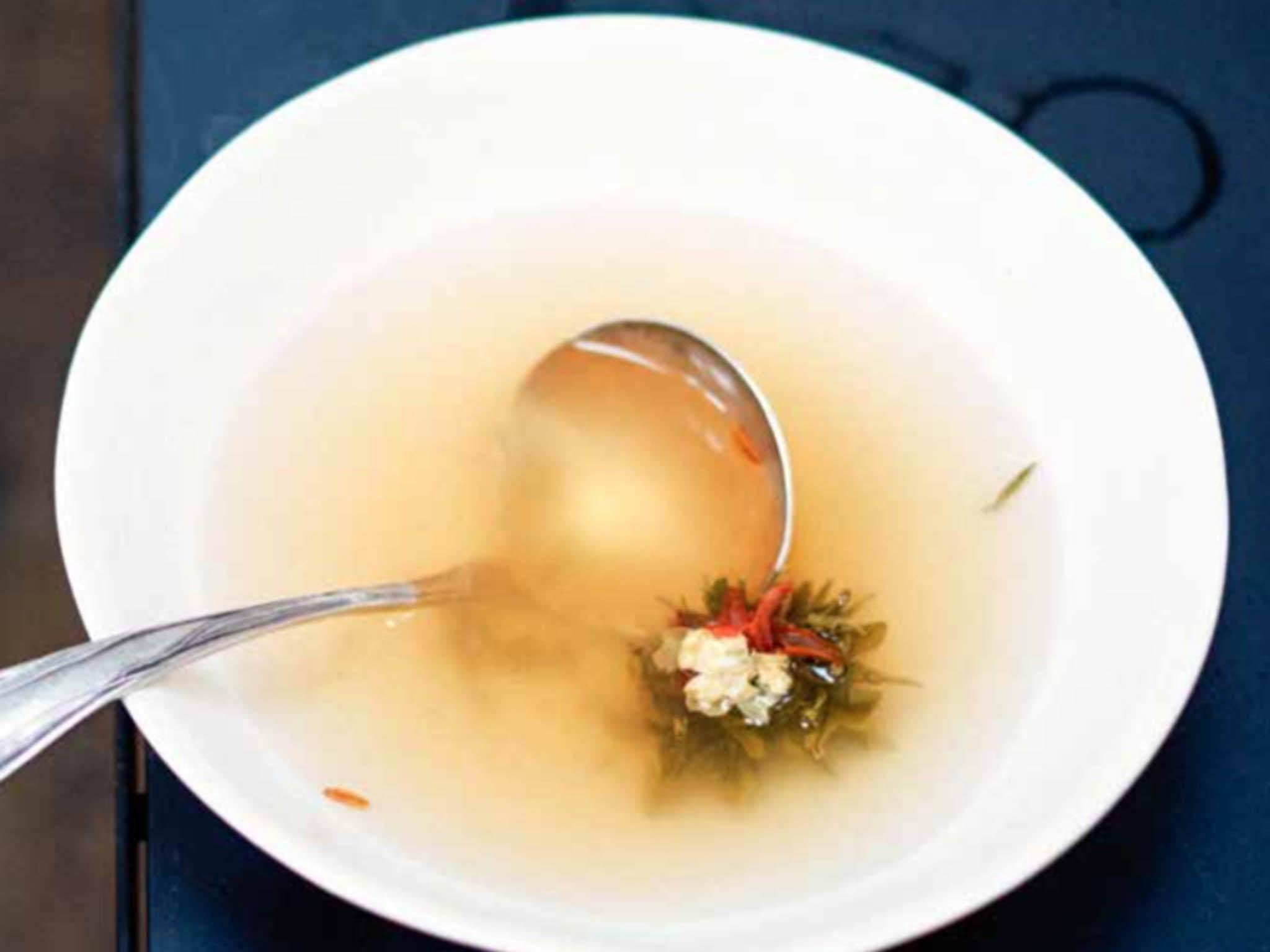
1 teaspoon black peppercorns2 cardamom pods1 stick cinnamon½ nutmeg1 thumb ginger6 cloves500g sugar250ml water8 shots (200ml) golden rum4 shots (100ml) dark rum6 shots (150ml)6 shots (150 ml) lemon juice6 shots (150ml) cloudy apple juice500ml dry cider
Nestle a fire poker in the embers of a fire, in a bonfire or on the hob.
To make a spiced syrup, bash the peppercorns, cardamom, cinnamon, nutmeg, ginger and cloves in a pestle and mortar. Add the water to a pot and heat.
When boiling, add the sugar and the ground spices, then remove from the heat. Stir, allow to cool, then strain through a sieve.
Place the tea bud in the punch bowl, add the boiling water and allow to steep for 1 minute.
Add the remaining ingredients plus 4 shots (100ml) of your spiced syrup.
Remove the now red-hot poker from the fire and slowly plunge into the punch. When it stops fizzing, remove and ladle into cups.
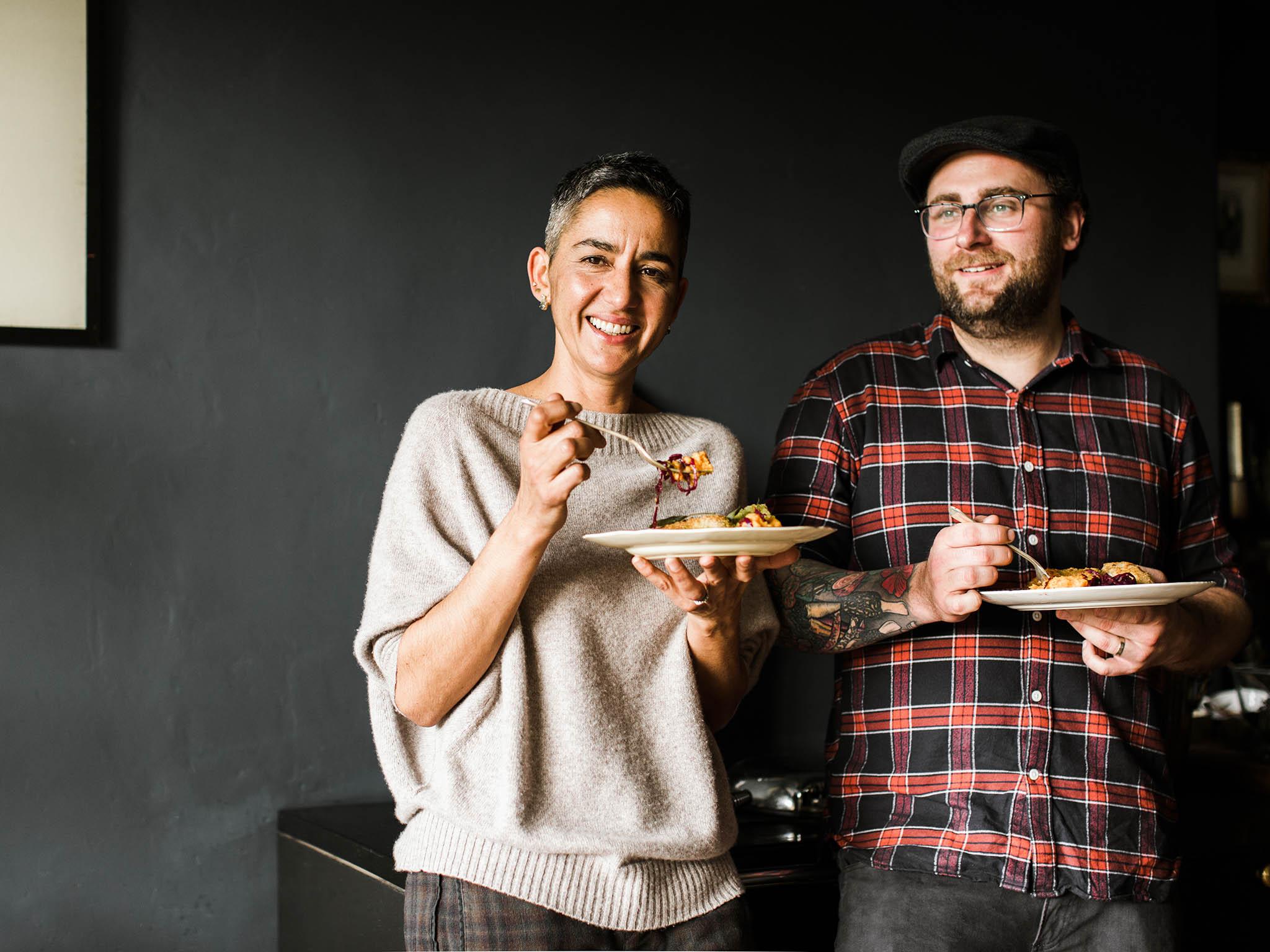
Festive game with Geetie Singh-Watson
Geetie is an MBE and founder of the first official organic pub in Britain, The Duke of Cambridge, London, and owner of the The Bull Inn, Totnes.
“We’ve been cooking this on Christmas Eve for years, and now I’ve worked with our head chef James Dodd to make it a little more special so we can put it on the menu at The Bull Inn.
"Pheasant is such an underrated meat and as a wild bird it arguably has a much lower environmental impact than farmed chicken. By pairing the beautiful meat with the Christmas-spiced red cabbage and a kale-packed garlic butter, this is a truly seasonal celebration of homegrown food.”
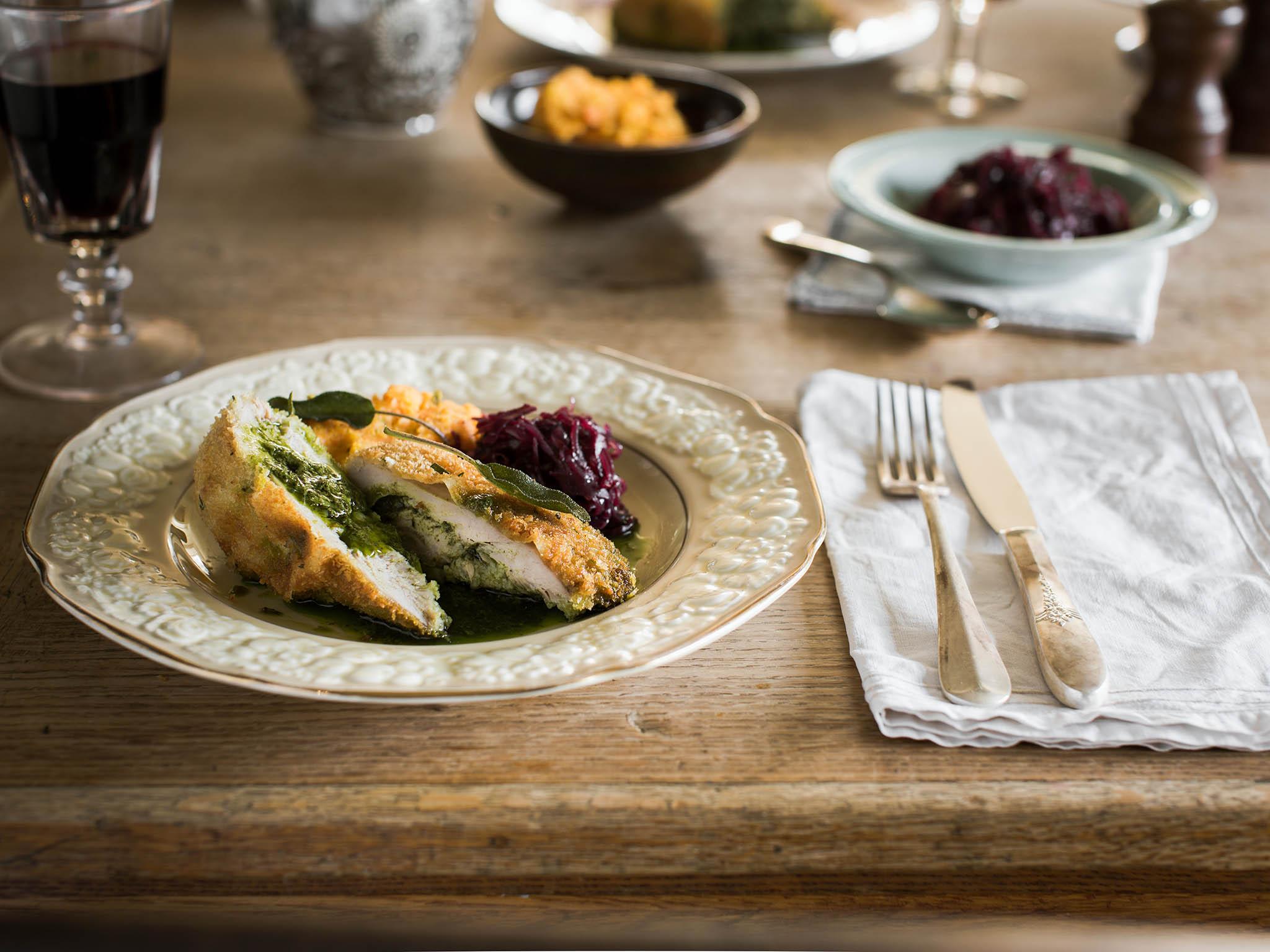
Pheasant Kiev with cavolo nero garlic butter, mulled red cabbage and crushed carrot and swede
Serves 4
Pheasant
7 per cent salt brine (35g of salt dissolved in 500ml water)4 skinless pheasant breasts (brined for 4 to 8 max hours, but this is optional)250ml of sunflower oil for frying
Garlic Butter
100g unsalted butter (room temperature)2 garlic cloves1 head of cavolo nero stripped50ml olive oil 1tsp Dijon mustardSalt and pepper to taste1 zest of lemon
Bread crumb coating
120g breadcrumbs4 tbsp plain flour2 whole egg whisked
Braised red cabbage500g sliced red cabbage100g demerara sugar40ml red wine vinegar80ml apple juice40ml balsamic vinegar80g dried cranberriesPinch of ground cinnamon, clove, coriander, ginger and a grating of nutmeg4 strips of clementine peel
Crushed swede and carrots
1 large swede 4 large carrots100g butter4 sage leavesGood sprig of rosemarysalt and pepper to taste
Start by making your salt brine for the breasts by whisking the salt into cold water. Once the salt is completely dissolved, put your pheasant breasts in a non-reactive container and pour the brine over them to completely submerge. Lid the container and put in the fridge for four to a maximum of eight hours. The longer the breasts are left in there the saltier they will be.
Next make the butter by boiling the cavolo nero for four minutes. Once boiled, put into ice-cold water straight away to refresh. Squeeze as much of the water as you possibly can out of the cavolo, then blend to a smooth puree with olive oil and mustard. Then add your butter, making sure its room temperature, along with the garlic, lemon zest and salt and pepper. Blend to a smooth vibrant green butter, taste and adjust the seasoning to taste.
To make the braised red cabbage, simply gently sweat the sliced cabbage down with a splash of oil just to take the bite off it. Then combine the rest of the ingredients into the pan with a lid and cook on a gentle heat for around 40 minutes, stirring every now and then.
For the crushed carrot and swede, peel and wash both then roughly cut into 1cm chunks. Gently melt half the butter in a pan then add the diced veg, put a lid on and cook out gently stirring occasionally until soft enough to crush with the back of a spoon. Once cooked and crushed add the remaining butter, chopped sage leaves, rosemary and salt and pepper to taste. My personal preference is lots of pepper!
Take your pheasant breasts from their brine, rinse in fresh cold water and pat dry. Using a sharp knife and going in from the thicker end of the breast, cut a deep pocket into the middle of the breast being careful not to cut through the other side else the butter will leak out while cooking. Then either push or pipe the butter into the middle, getting as much as you can in but not overfilling (don’t worry if there is left over butter, that works nicely melted and served in a jug alongside to pour over).
Once all breasts are stuffed put them back in the fridge for the butter to go hard in them, this will make the coating process easier. Season your breadcrumbs with a pinch of salt and pepper, chopped sprig of rosemary and chopped sprig of thyme. Then in separate bowls line up in order your flour, whisked eggs and breadcrumbs. Take your breasts then in order lightly coat in the flour then the egg and then coat well in the breadcrumbs.
Heat the oil in a frying pan, you will know it’s hot enough when a cube of bread dropped into it browns in 30 seconds. Once hot enough drop your breasts into the oil cooking till nicely browned on one side then flip and repeat the process of the other side. Fry until golden, about 2-3 minutes each side then transfer to an 180C oven and cook for 10-15 mins.
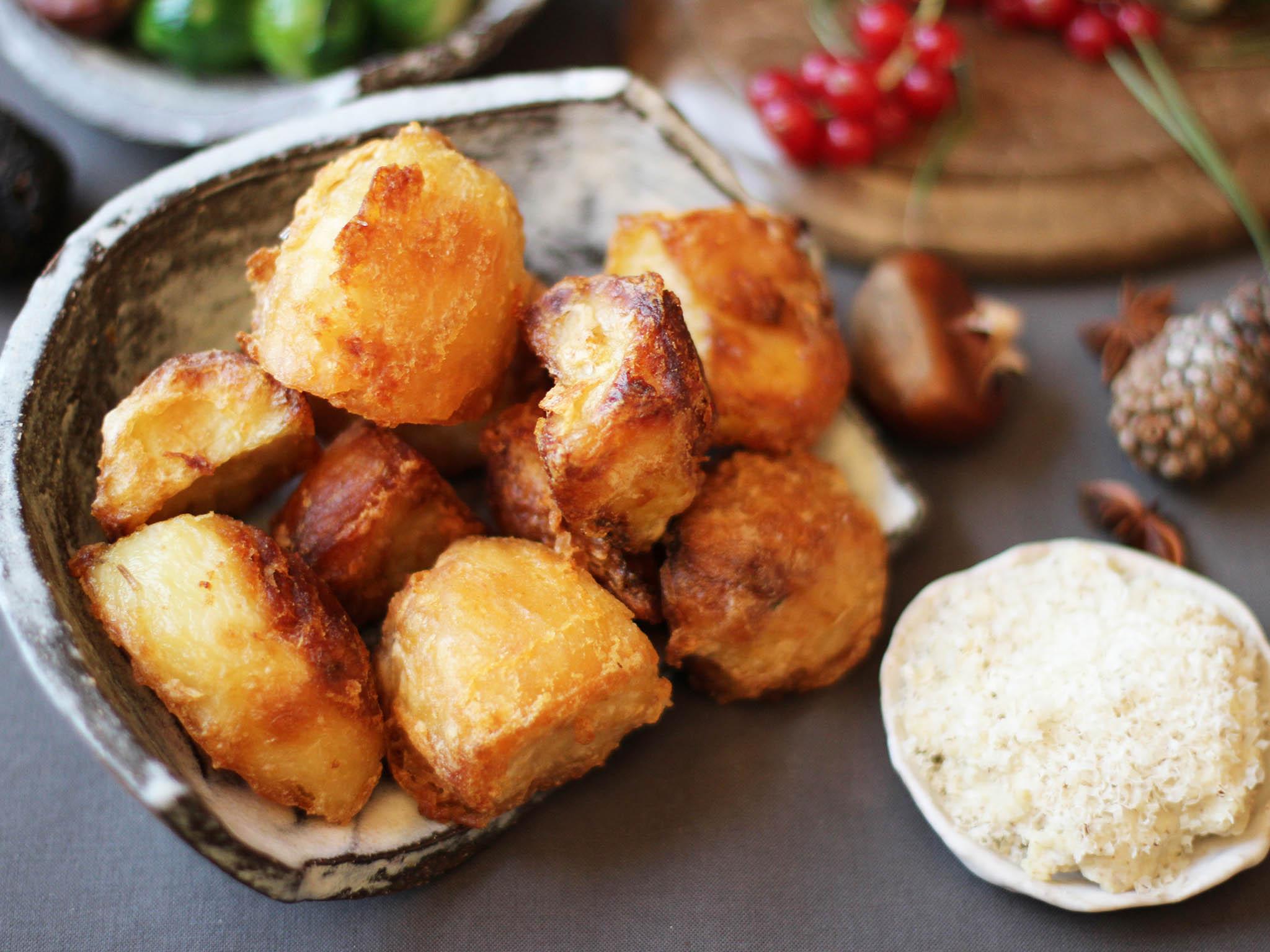
The secrets to a perfect plant-based Christmas dinner with Kirk Haworth
In a career spanning 16 years, Kirk has worked in some of the world's top restaurants, including three-Michelin-starred The French Laundry, Restaurant Sat Bains, The Square and Quay in Sydney. As Plates co-founder he takes all that nature has to offer and delivers modern, plant-based food with Michelin-standard execution
Kirk Haworth’s Michelin-star chef lifestyle was meat, fish and dairy heavy. But, in 2016, a diagnosis with Lyme Disease led him to overhaul his lifestyle. After discovering that a vegan diet relieved some symptoms, his new plant-based ethos was born. The caramelised onion gravy served at his restaurant, Plates, takes three days to create but Kirk shares his quick wins for a delicious Christmas feast.
“There are two secrets to good roast potatoes. The first is to use Maris Piper potatoes, the second is coconut oil. Simply, boil your potatoes up gently from cold water with a pinch of salt.
“Place a deep roasting tray with 100g of organic coconut oil in the oven at 180C. Cook until al dente, drain the water, put the lid back on the pan and until fluffy around the outside. Place potatoes onto the hot tray and roast until golden brown for 45 to 60 minutes, turning them every 15 minutes.
"Another secret is that brussels don’t need pancetta to be sexy. Instead, mix in some roast chestnuts and truffle oil and a good pinch of Maldon sea salt.”
The leftover challenge with Douglas McMaster
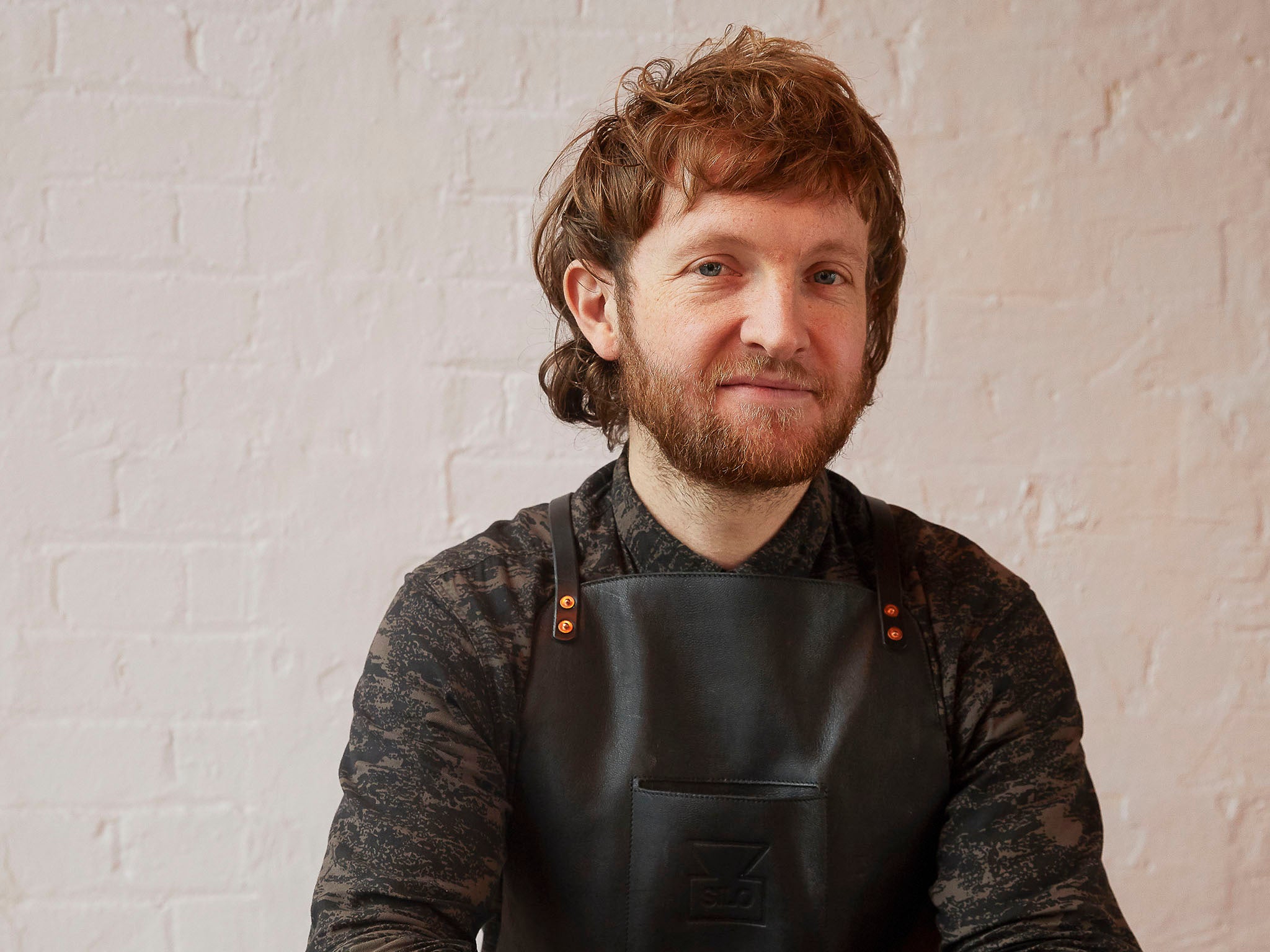
Pioneer of the zero-waste movement, Douglas has shared his food philosophy at TedX talks and at symposiums globally. He is the owner of Silo in Hackney.
“First things first, using up leftovers is not a chore, it’s a creative challenge! At Christmas time especially, it’s important we all work together to be conscious of food waste. I always weigh my ingredients beforehand and aim for around 800g-1kg per person, so I don’t have excess waste.
“I also try not to cook too many food items that can’t be reused, including – controversially – sprouts as well as dressed salads. My aim is to create ‘table abundance’ by cooking foods that can be easily reused, such as root vegetables that can easily be turned into a soup the next day.”
Come out of your shell with Joel and Aiste Gazar
Joel and Aiste Gazdar are dedicated to wellbeing and the founders of the Wild Food Café, which offers nourishing plant-based food in London
“Christmas is the time when we pay respects to more traditional flavours and aromas. For us, it is all about those key dishes that everyone gathers together for, and ingredients that come out of their shell (quite literally!) and tune us in to the festive spirit," says Gazar.
“This upside-down pie appeared on our winter menu one year and remained forever imprinted in our hearts. The combination of caramelised raisins, chestnuts and pine nuts is absolutely heavenly.”
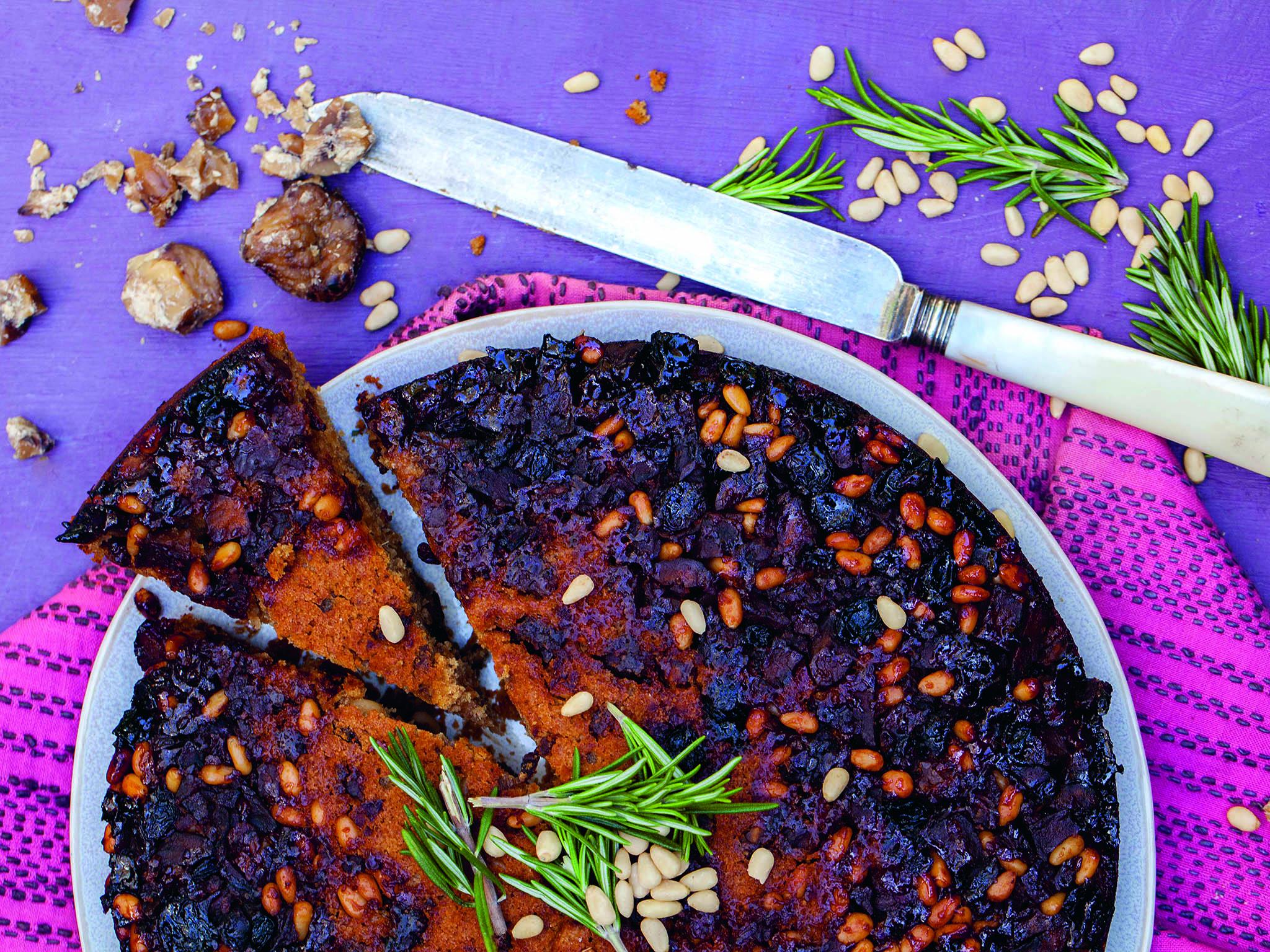
Upside-down chestnut and pine nut pie
Topping
200g boiled chestnuts, roughly chopped 30g pine nuts 30g soaked raisins, drained
Caramel
100g boiled chestnuts, roughly chopped80g coconut sugar30g pine nuts 2 tbsp coconut oil 4 tbsp water
Wet ingredients for the pie
280ml almond milk240ml maple syrup110g coconut sugar 100ml olive oil1 stalk of rosemary, leaves only1 1⁄2 tbsp apple cider vinegar zest of 2 oranges1⁄2 tsp salt
Dry ingredients for the pie
230g gluten-free flour40g chestnut flour 30g almond flour100g boiled chestnuts30g raisins30g pine nuts2 tsp baking powder
To decorate
Pine nutsSprigs of fresh rosemary
Preheat the oven to 180C/350F/Gas Mark 4.
First make the "topping". Spread the chopped chestnuts over the base of a 25cm (10-inch) round cake tin. Add the pine nuts and soaked raisins and set aside.
Place all the caramel ingredients in a small saucepan. Bring to a boil over a medium-low heat, let it cook for approximately 10 minutes, then remove from the heat when the sugar has dissolved. Pour the caramel over the "topping".
Add all the dry pie ingredients to a large mixing bowl and combine. Blend all the wet pie ingredients in a high-speed blender until smooth then add to the mixing bowl with the dry ingredients. Combine together with a whisk until the mix is smooth.
Pour the mixture into the cake tin, making sure you cover the caramel mixture evenly. Bake for one hour, then remove from the oven and leave to cool. Flip the cake over so that the ‘topping’ is on the top. Decorate with pine nuts and sprigs of rosemary.
Extracted from ‘WILD’ by Joel and Aiste Gazar (Vermilion, £20); photography by Wild Food Café Un Limited 2019
Lizzie Rivera is founder of ethical lifestyle website bicbim.co.uk



Join our commenting forum
Join thought-provoking conversations, follow other Independent readers and see their replies
Comments